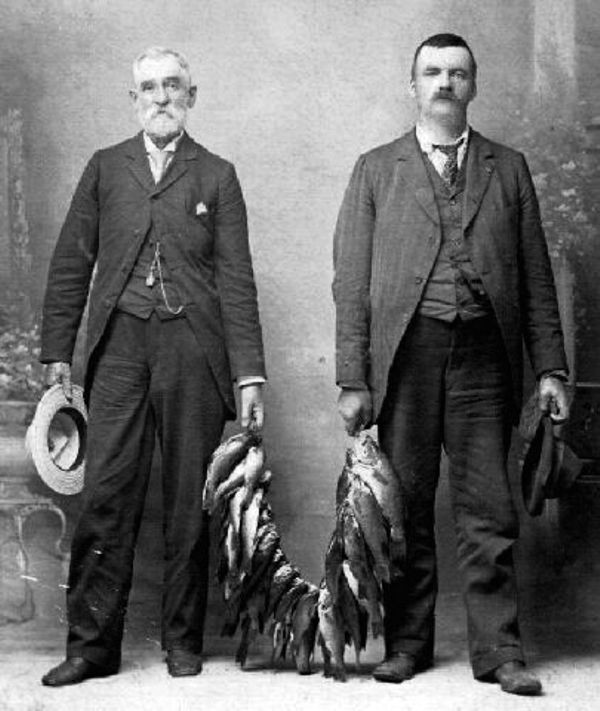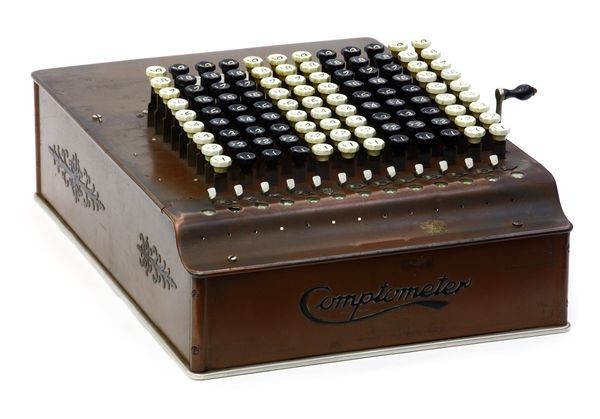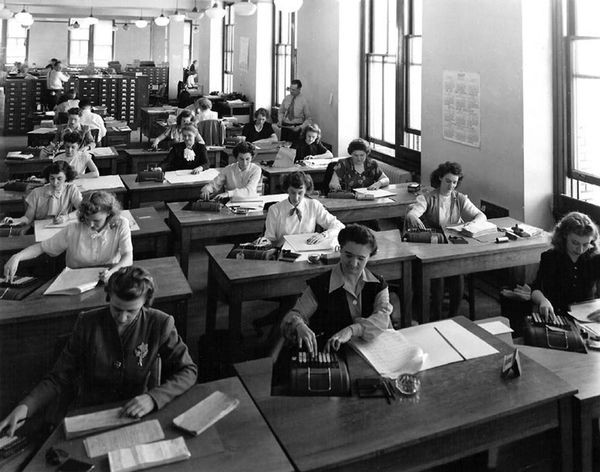Introducing the Keyboard
Felt & Tarrant Comptometer
More than 6,500 of these original Comptometers with wooden cases were built between 1886 and 1903. Fewer than 90 are known to have survived.
Introducing the Keyboard
It started with a wooden pasta box, meat skewers, and rubber bands. It ended as a prototype for the first commercially successful keyboard adding machine, the Comptometer.
Patented in 1887 by 24-year-old Dorr E. Felt, the Comptometer’s prime asset was ease of use. Pressing its keys drove the mechanism, which revealed the sum after all were pressed.
Dorr E. Felt (r) and partner Robert Tarrant (l)
Tarrant supported Felt’s early work and became Felt’s partner, but fishing was reportedly their only genuine shared interest.
View Artifact DetailFelt & Tarrant Comptometer
Although machines with as many as 16 columns were listed in the catalog, this 12-column version was apparently the largest ever built.
View Artifact DetailTypical accounting office with comptometers
Skilled operators used different techniques to work faster, hence the many finger and hand positions seen here.
View Artifact DetailFelt’s first prototype presented to the Smithsonian Institution
Felt’s daughter, Virginia Felt Koch, and her husband Raymond, present his “macaroni-box” prototype to Charles Abbot, Secretary of the Smithsonian.
View Artifact Detail







